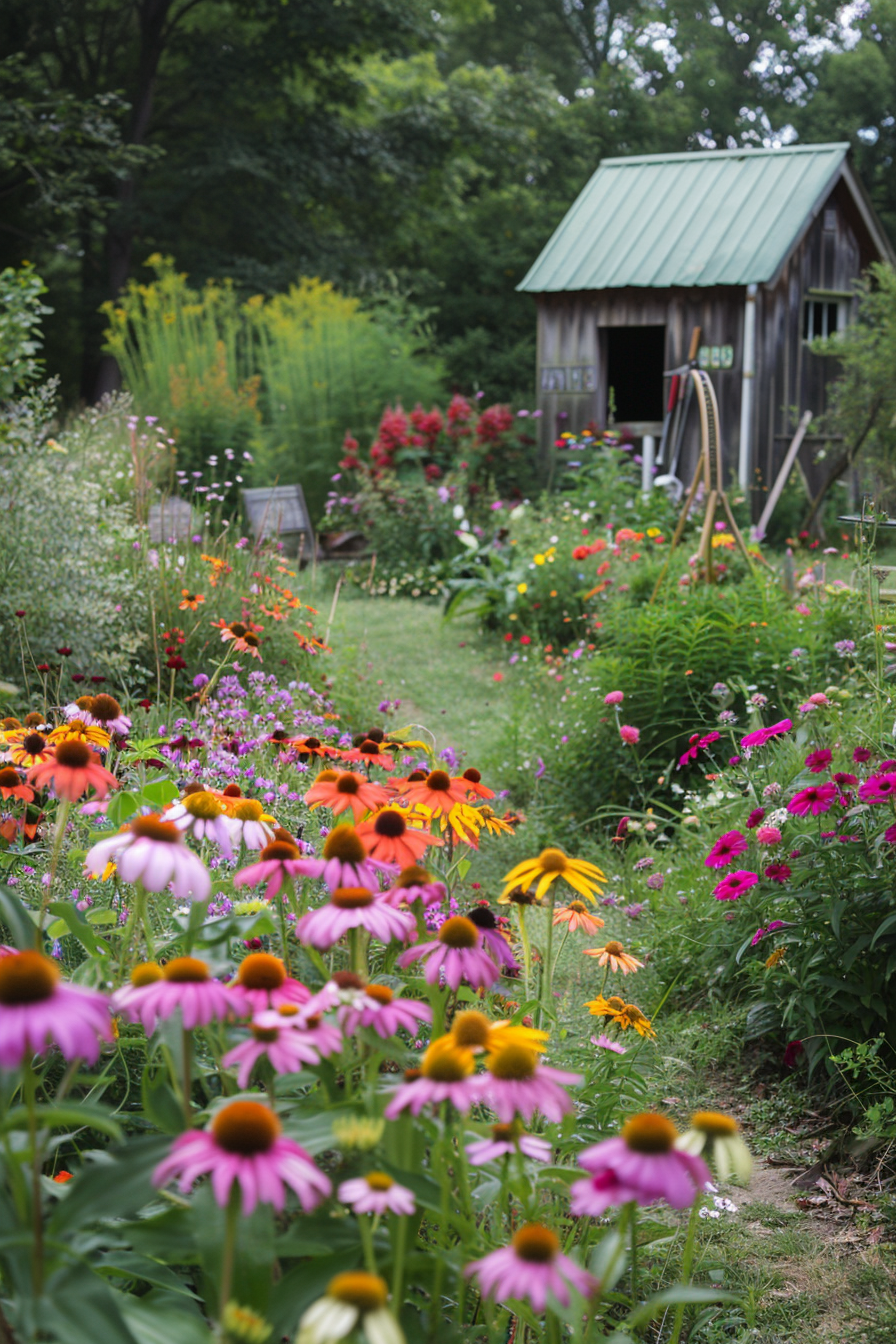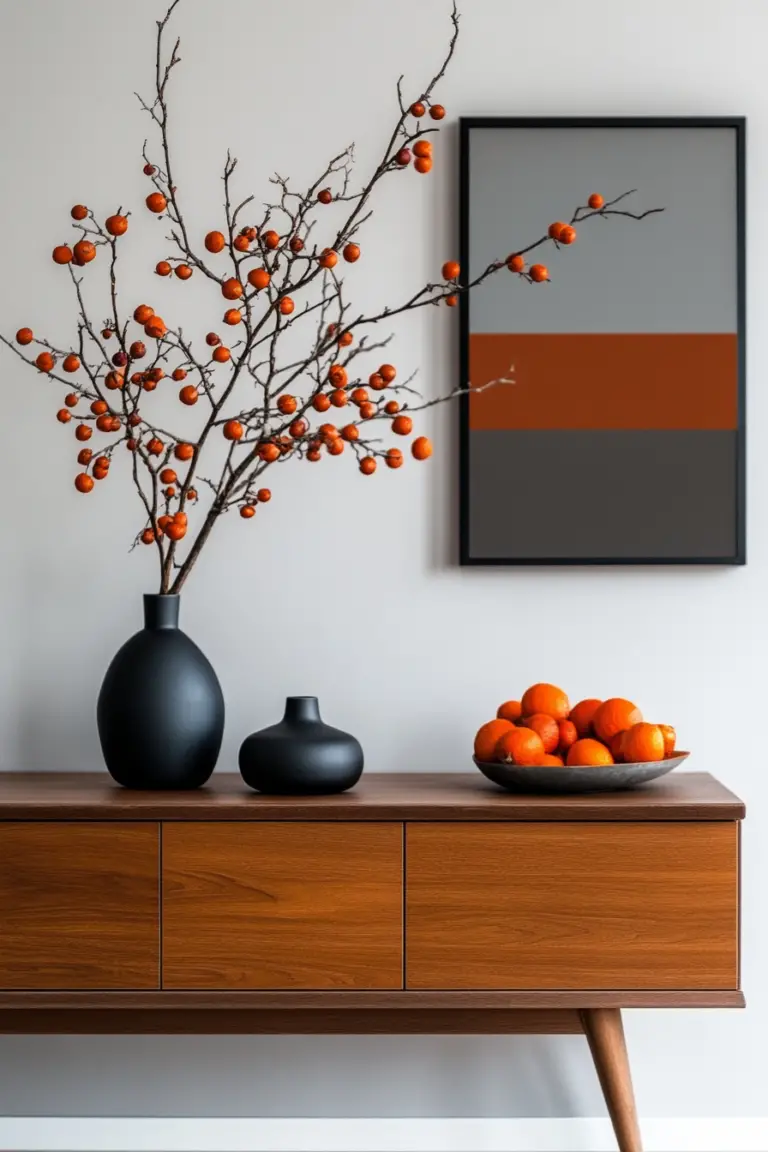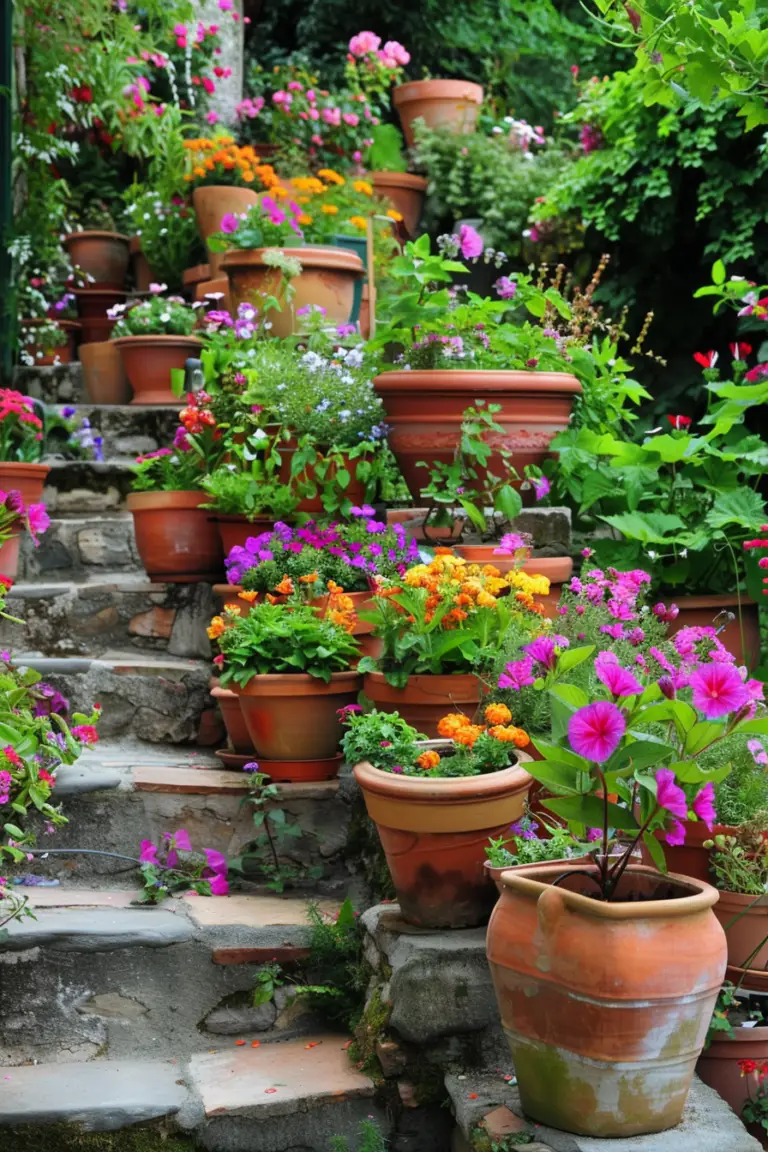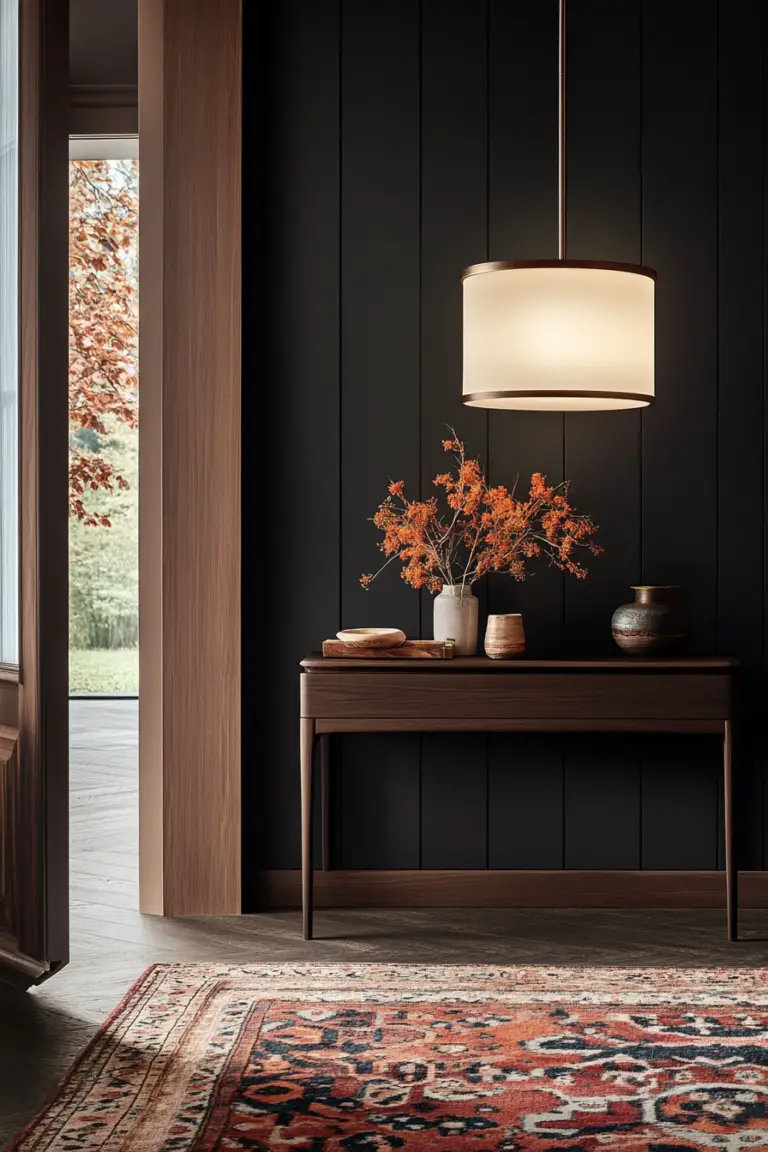How to Create a Cottage Garden at Home
Did you know that the iconic cottage garden style wasn’t born from the grand estates of English nobles, but rather from the humble yards of rural homes? This gardening approach dates back centuries and was rooted in practicality—providing families with vegetables, herbs, and flowers, all mixed together in charming, yet seemingly chaotic abundance. Today, the cottage garden has evolved into a sought-after style, admired for its relaxed beauty and a nostalgic nod to simpler times.
Key Elements of a Cottage Garden
- Abundant Planting
Cottage gardens are all about density. They should look lush and overflowing, with plants spilling over each other to create a tapestry of colors and textures. A mix of perennials, annuals, herbs, and vegetables is key to keeping that informal, yet productive, charm. - Curving Paths and Structure
Unlike formal gardens with straight lines, cottage gardens embrace curves. Winding stone or gravel paths lead you through the space, offering a sense of discovery. Low hedges, rustic arbors, or even a quaint picket fence can help add structure while keeping the vibe natural and whimsical. - Variety of Flowers
Old-fashioned flowers like roses, foxgloves, hollyhocks, and lavender are staples. The goal is to create a living bouquet, with colors that blend harmoniously. Pinks, purples, whites, and yellows often dominate, but don’t be afraid to experiment. - Wildlife-Friendly Design
A true cottage garden isn’t just about human enjoyment—it’s also a haven for bees, butterflies, and birds. Plant pollinator-friendly flowers, like coneflowers and daisies, and avoid harsh pesticides to invite wildlife into your space. - A Touch of Romance
Elements such as vintage garden furniture, a birdbath, or even a weathered bench can add a romantic, lived-in feel. Soft, pastel-colored blossoms and vines that climb gracefully over trellises or walls enhance the dreamy atmosphere.
Tips for Creating a Cottage Garden on a Budget
You don’t need to break the bank to bring this charming look to life. Here are some budget-friendly options that will help you get the cottage garden vibe without overspending:
- Start from Seed: Many classic cottage garden plants are easy to grow from seed, which is much more affordable than purchasing mature plants. Marigolds, cosmos, and zinnias are fast-growing options that will give you blooms in no time.
- Swap Plants with Friends: Cottage gardens thrive on variety. Swapping plants or cuttings with friends and neighbors can help you increase diversity without spending a penny.
- Reuse and Repurpose: Instead of buying new garden furniture or décor, look around your home or local flea markets. An old chair can become a plant stand, and a weathered watering can makes a charming focal point.
- Use Mulch and Ground Covers: To fill out your space without having to invest in dozens of plants, use inexpensive mulch or ground covers like creeping thyme or sweet woodruff to create that layered, full look.
Quick Wins to Achieve the Cottage Garden Aesthetic
For those looking for fast ways to transform their outdoor space, try these ideas:
- Plant a Climbing Rose: Adding a climber over an arbor or trellis instantly adds charm and vertical interest. Plus, roses are quintessential to the cottage garden style.
- Scatter Wildflower Seeds: For an easy splash of color, scatter wildflower seeds in any open space. They’ll grow with little maintenance and provide a natural, whimsical feel.
- Add a Birdbath or Small Water Feature: A simple birdbath or fountain brings wildlife and enhances the cottage feel in one afternoon.
Quick Tips to Pull It All Together
- Mix Heights and Textures: Place taller plants at the back and let shorter, creeping varieties spill over the front for that layered, full look.
- Go for Soft Colors: Lean towards soft pinks, purples, blues, and whites to create a cohesive and calming palette.
- Avoid Perfection: The beauty of a cottage garden is in its natural, slightly untamed appearance. Let plants grow into each other, and resist the urge to overly prune or control the space.
- Incorporate Edibles: Don’t forget the practical side of cottage gardening. Add herbs like rosemary or thyme along with easy vegetables like tomatoes or peas to add function as well as beauty.
1. Plant Vibrant Flowering Perennials
Flowering perennials like coneflowers, peonies, and daisies form the backbone of a cottage garden. They come back year after year, providing continuity and long-lasting color. Mix different varieties for a riot of hues and forms.
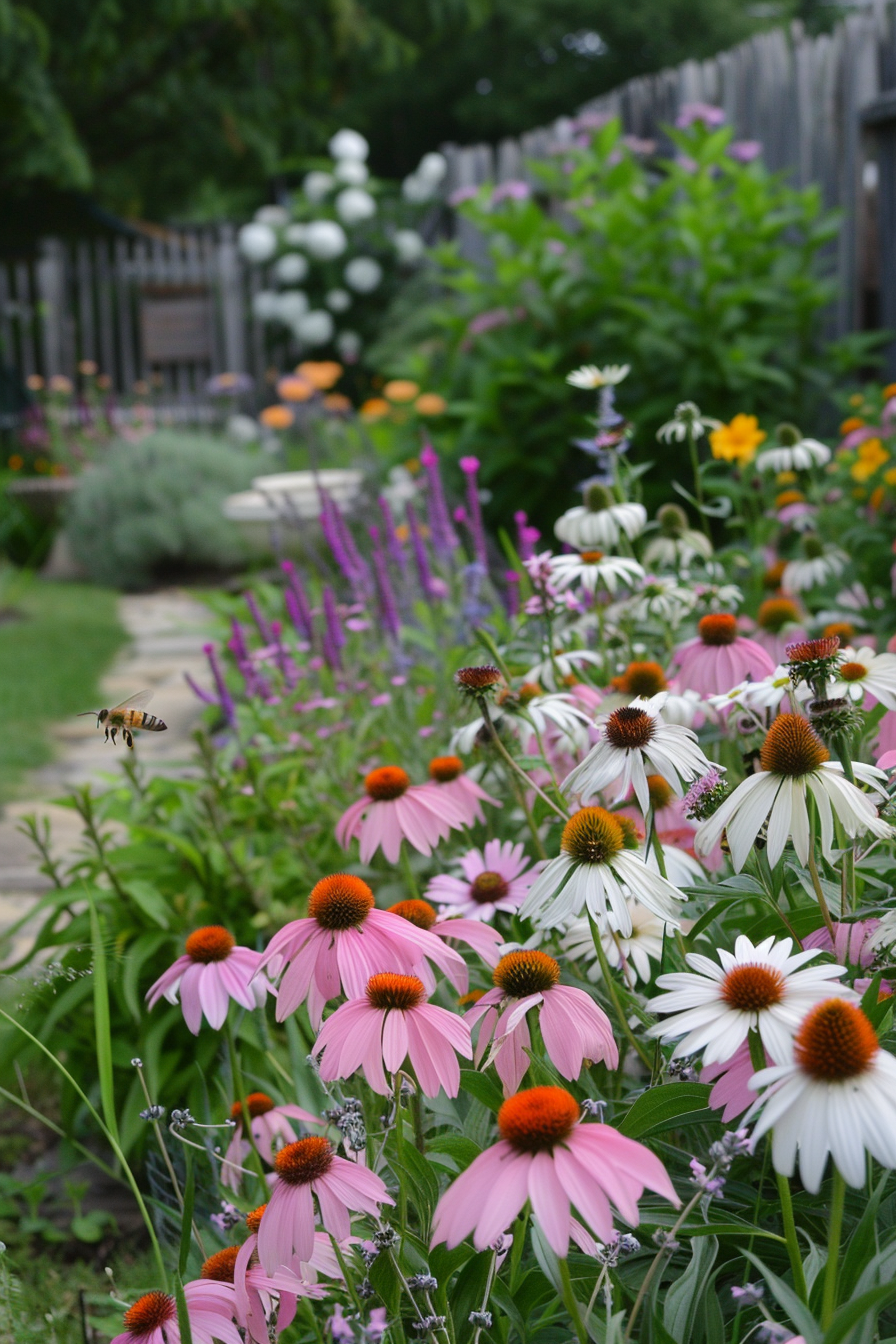
2. Incorporate Climbing Plants
Climbing plants like clematis, roses, and honeysuckle add vertical interest and a touch of romance. Let them scramble over arbors, trellises, or fences, creating a lush, green backdrop for the garden.
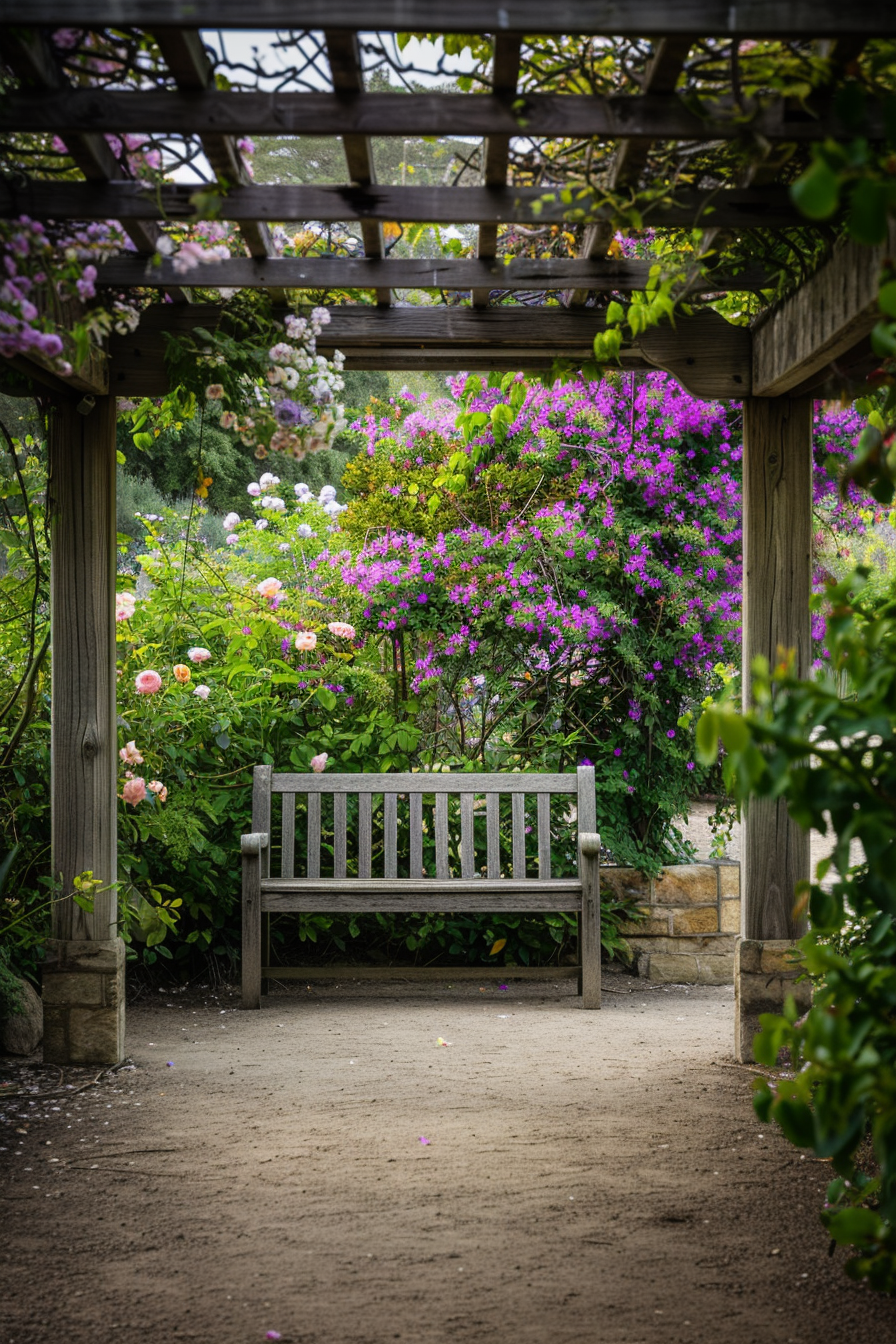
3. Use Traditional Cottage Garden Flowers
Classic flowers like foxgloves, delphiniums, and hollyhocks add a touch of nostalgia. Their tall spires and pastel colors bring a soft, old-world charm to the garden.
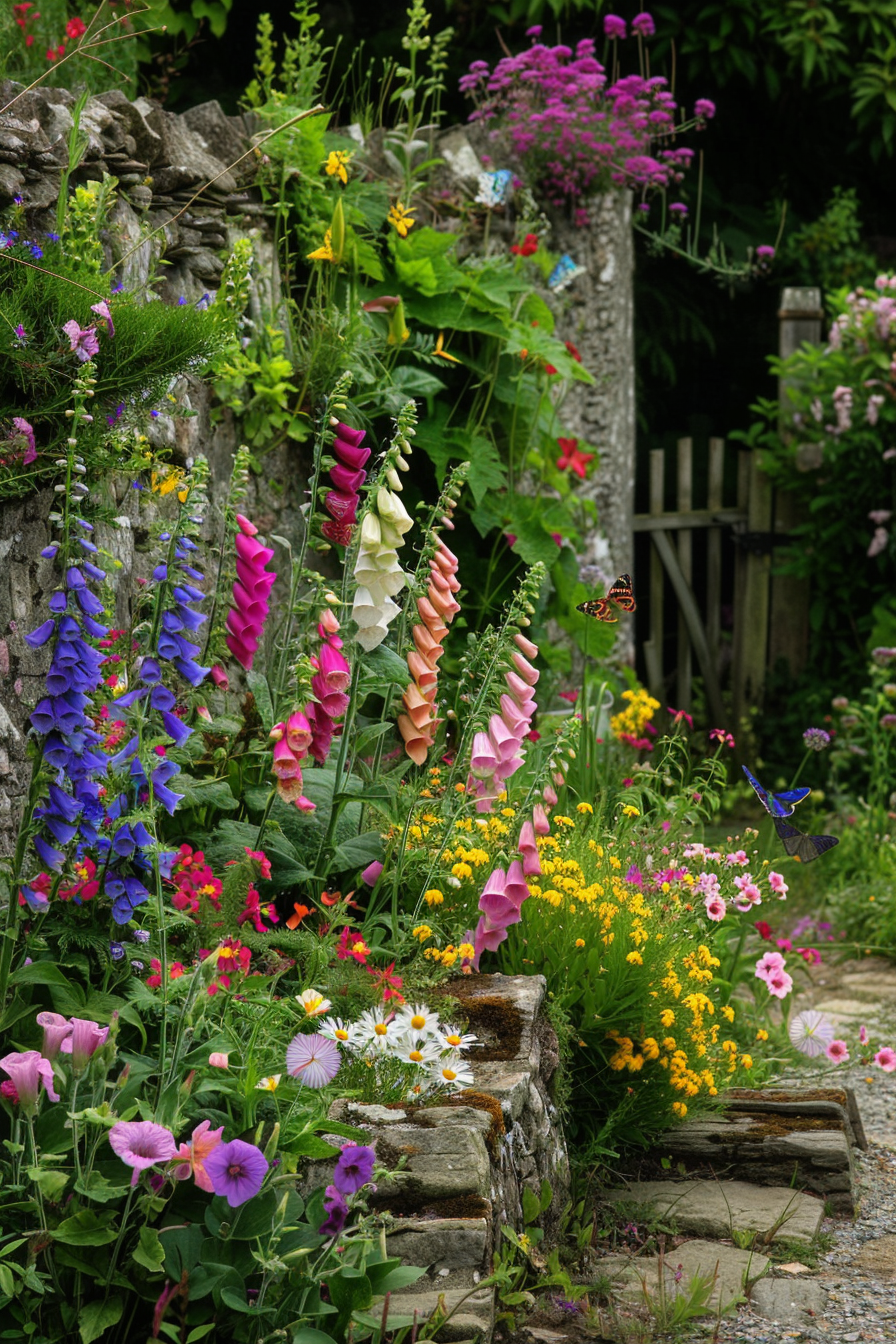
4. Create Meandering Pathways
Curved, winding pathways made of gravel or stone add a sense of mystery and discovery. They guide you through the garden, revealing new views and plantings at every turn.

5. Include Edible Plants
Integrate herbs, fruits, and vegetables into your cottage garden for both beauty and utility. Consider growing plants like lavender, thyme, strawberries, and cherry tomatoes alongside your flowers.
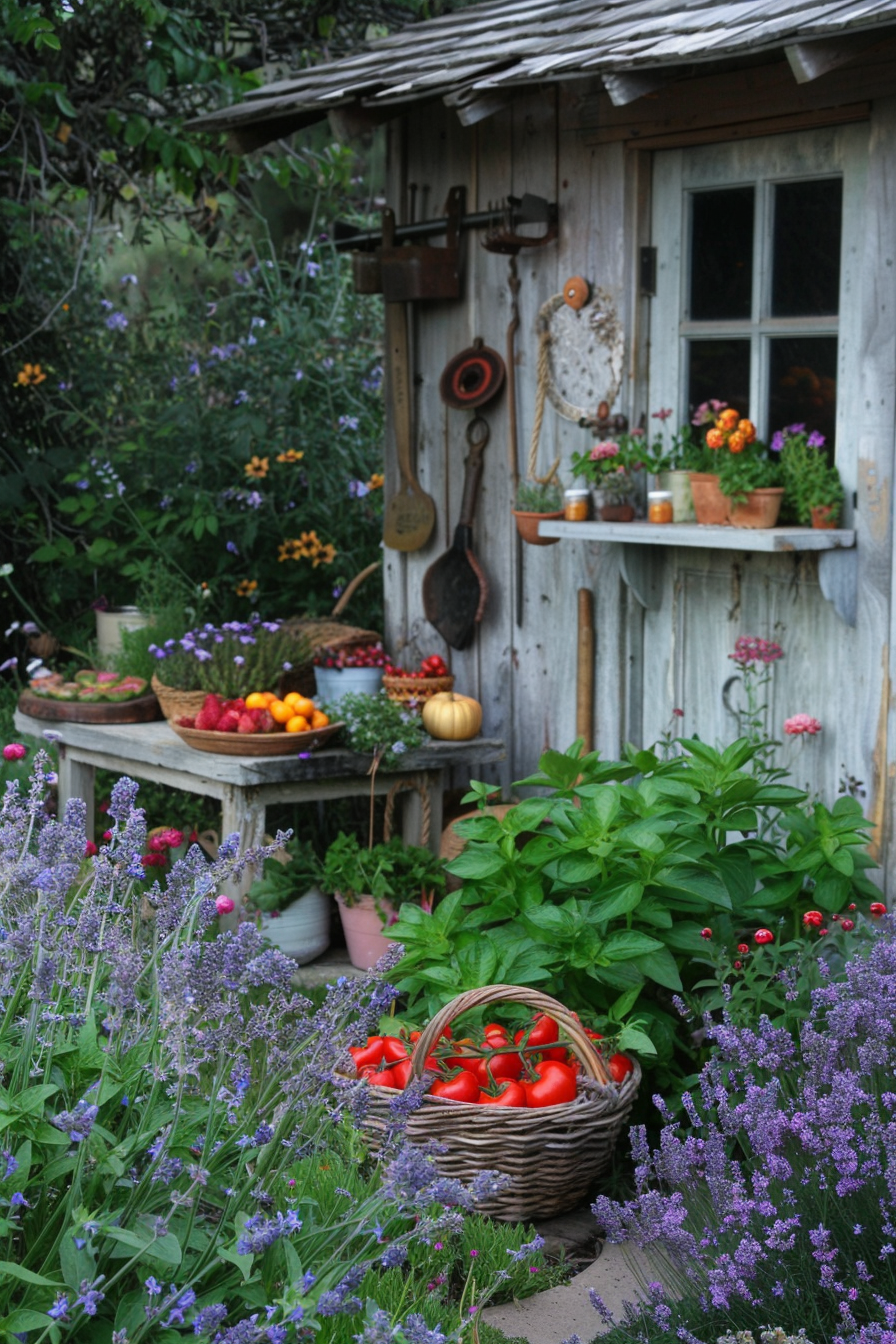
6. Add Ornamental Grasses
Ornamental grasses like maiden grass, fountain grass, and feather reed grass provide texture and movement. Their swaying plumes add a graceful touch to the garden, especially when caught in the breeze.

7. Focus on Seasonal Blooms
Plan your garden for year-round interest by selecting plants that bloom in different seasons. This ensures that there’s always something in flower, from spring tulips and summer hydrangeas to autumn asters and winter hellebores.
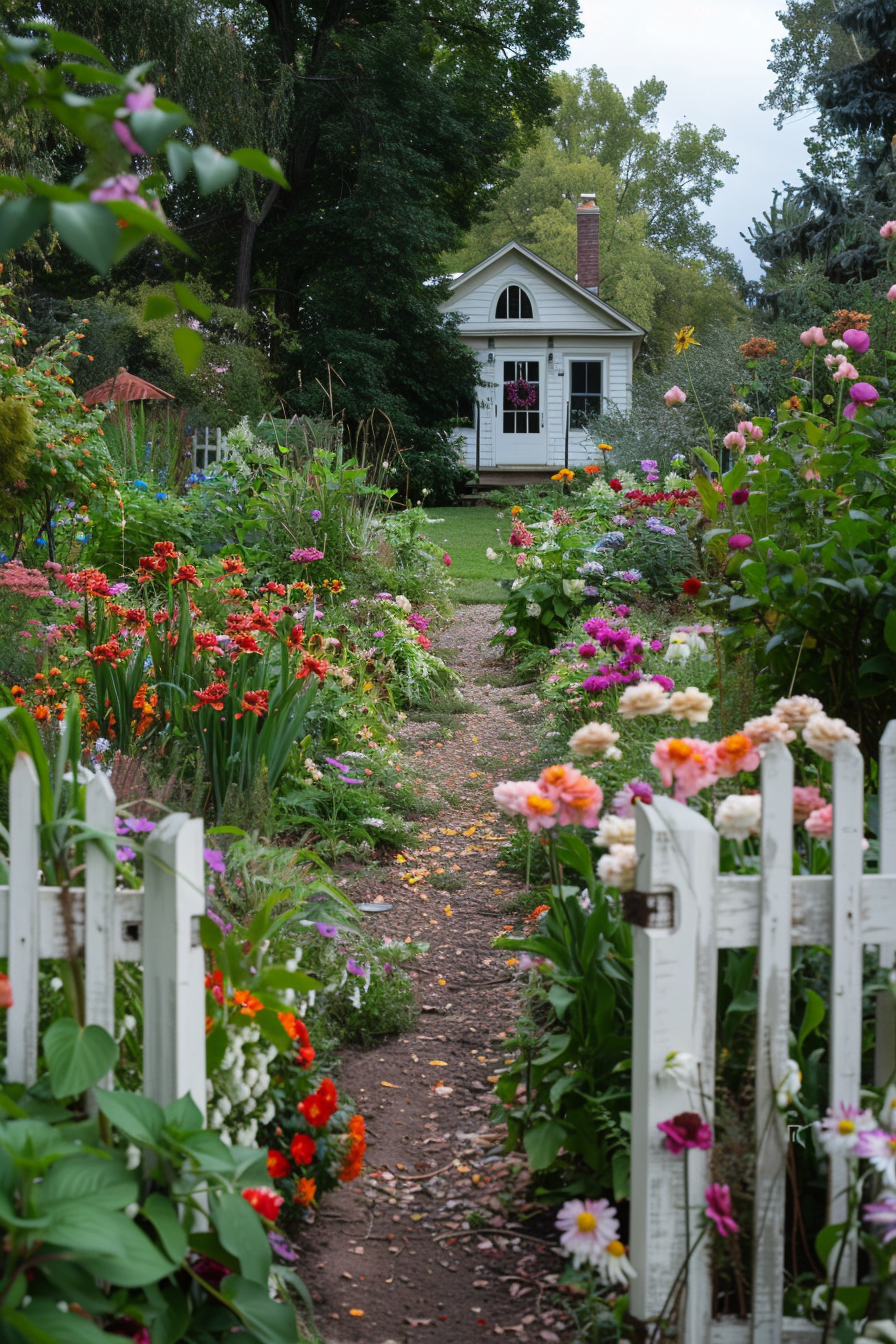
8. Introduce Cottage Garden Shrubs
Shrubs like lilac, hydrangea, and spirea add structure and lushness to the garden. Their abundant blooms and foliage create a dense, layered look that is characteristic of cottage gardens.
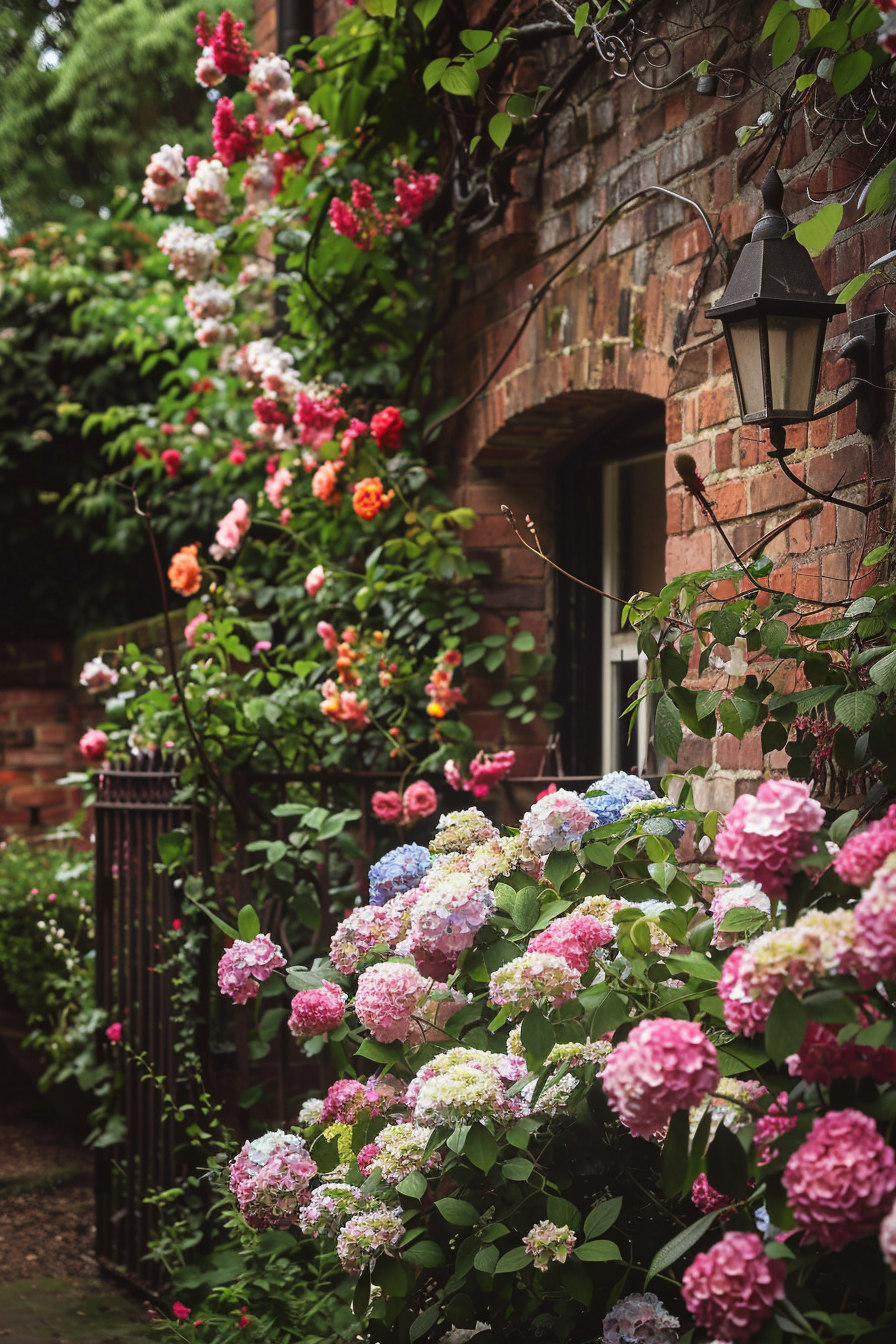
9. Blend Annuals and Perennials
Mix annuals like marigolds and zinnias with perennials for a blend of reliable, long-term plants and vibrant seasonal color. This combination keeps the garden dynamic and ever-changing.

10. Design with Different Heights
Create a sense of depth and interest by planting tall flowers like sunflowers and lupines in the back, medium plants in the middle, and ground-hugging flowers like creeping thyme in the front.
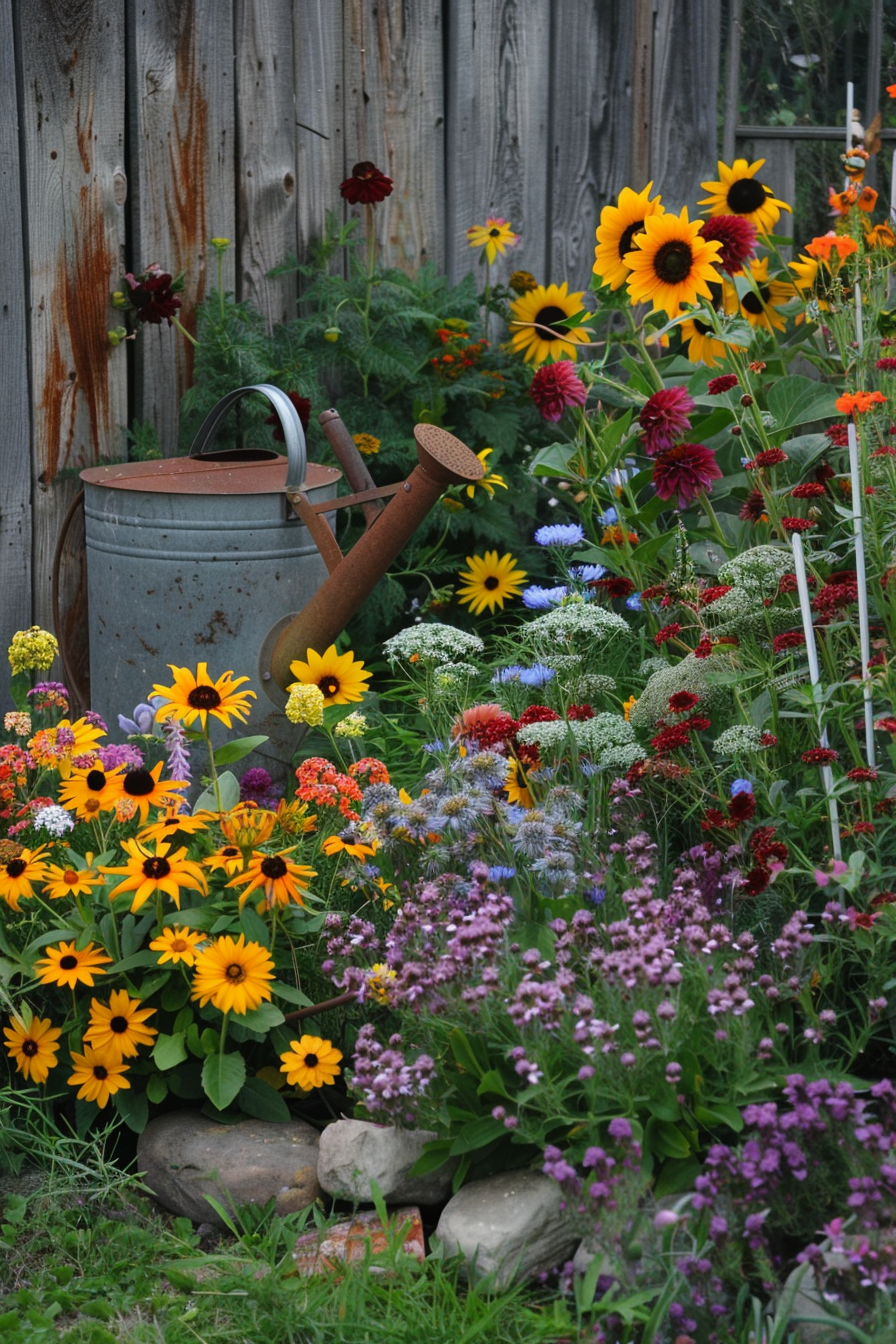
11. Use Old-Fashioned Roses
Old-fashioned roses such as heirloom and David Austin varieties are quintessential to a cottage garden. Their full blooms and enchanting fragrance evoke romance and history.
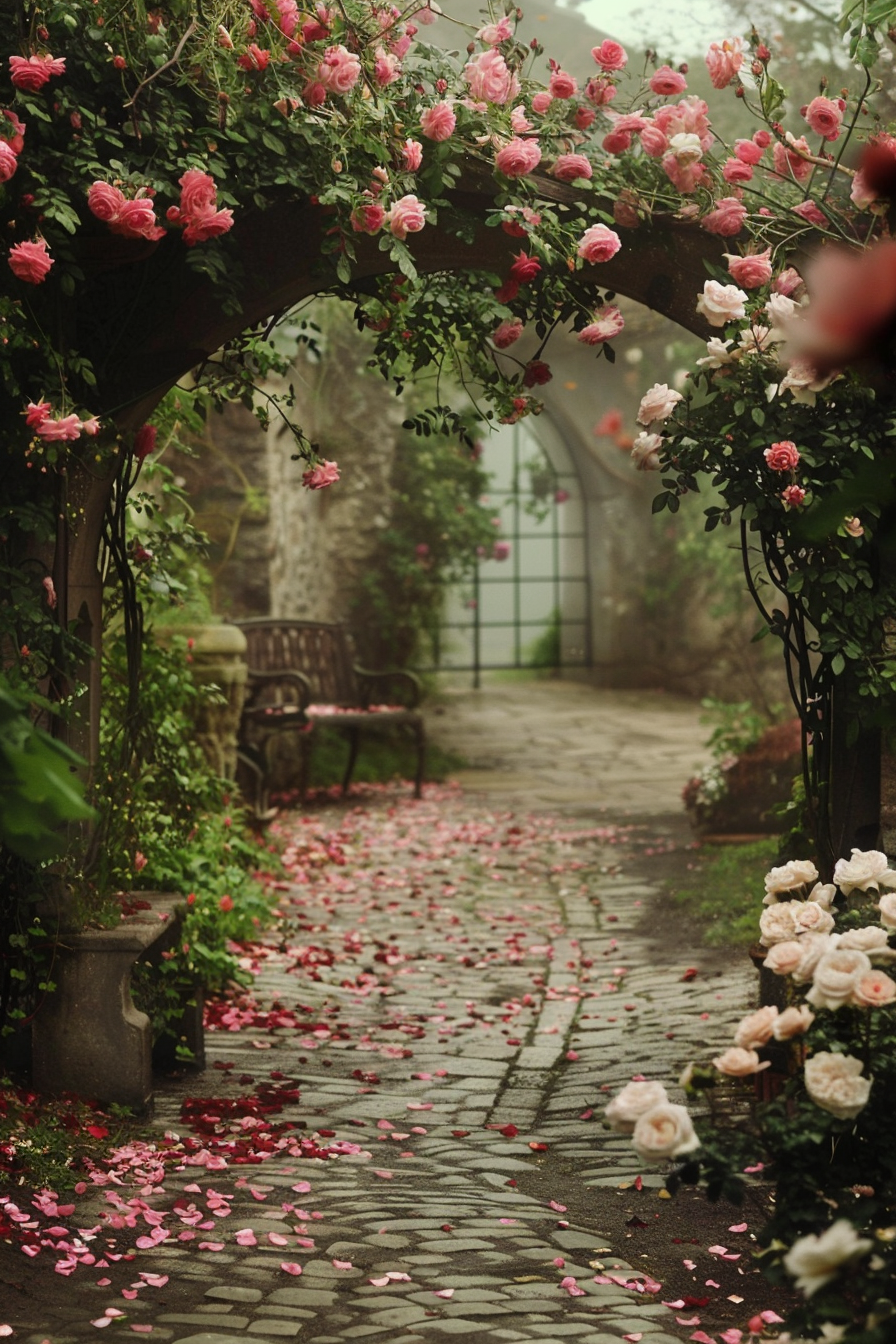
12. Add a Water Feature
A small pond, fountain, or birdbath can be a focal point in your garden. Water features attract wildlife and add a soothing element to the garden’s ambiance.
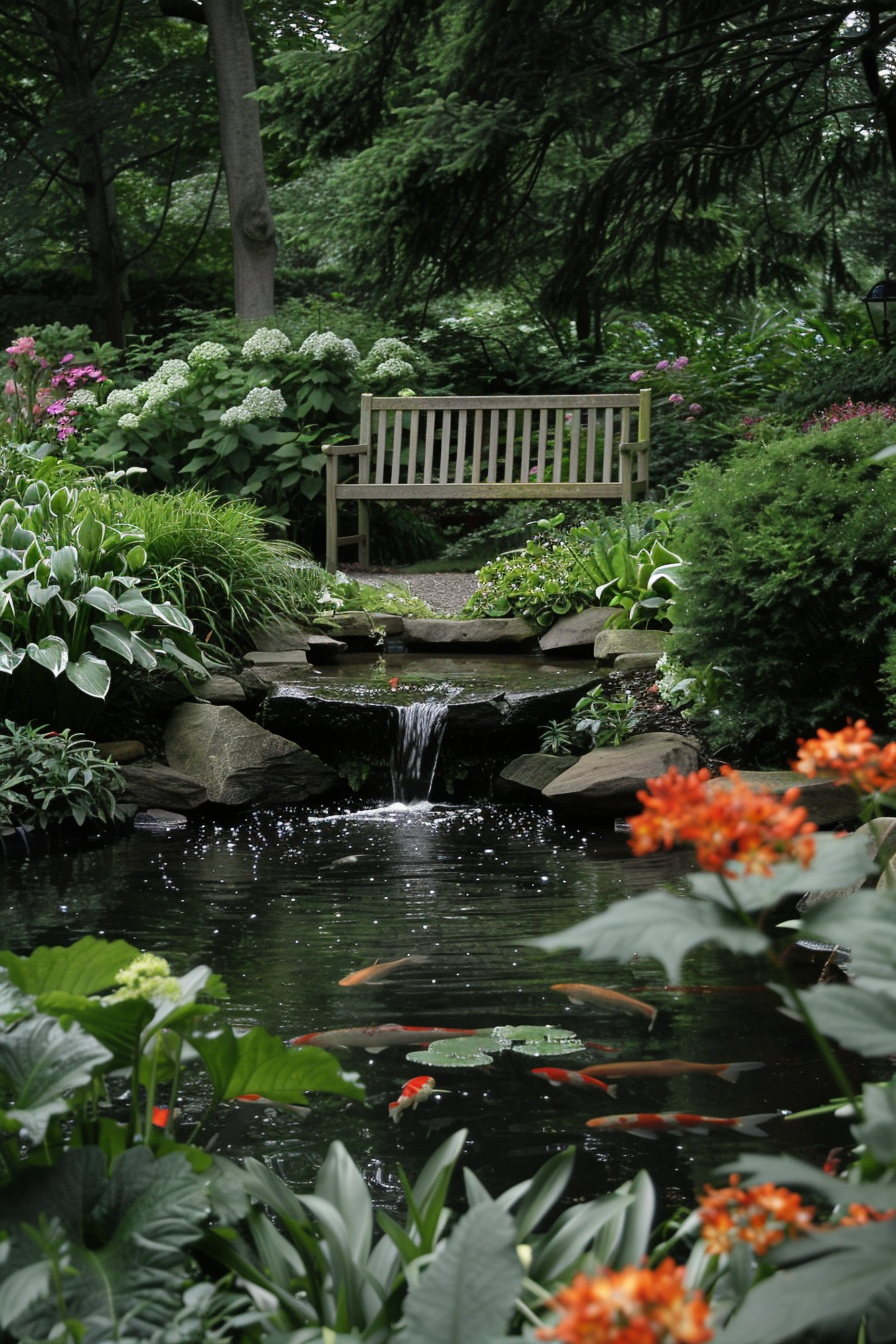
13. Create Cozy Seating Areas
Design intimate seating areas where you can relax and enjoy the garden. Use weathered benches, bistro sets, or Adirondack chairs tucked into lush corners or under pergolas.
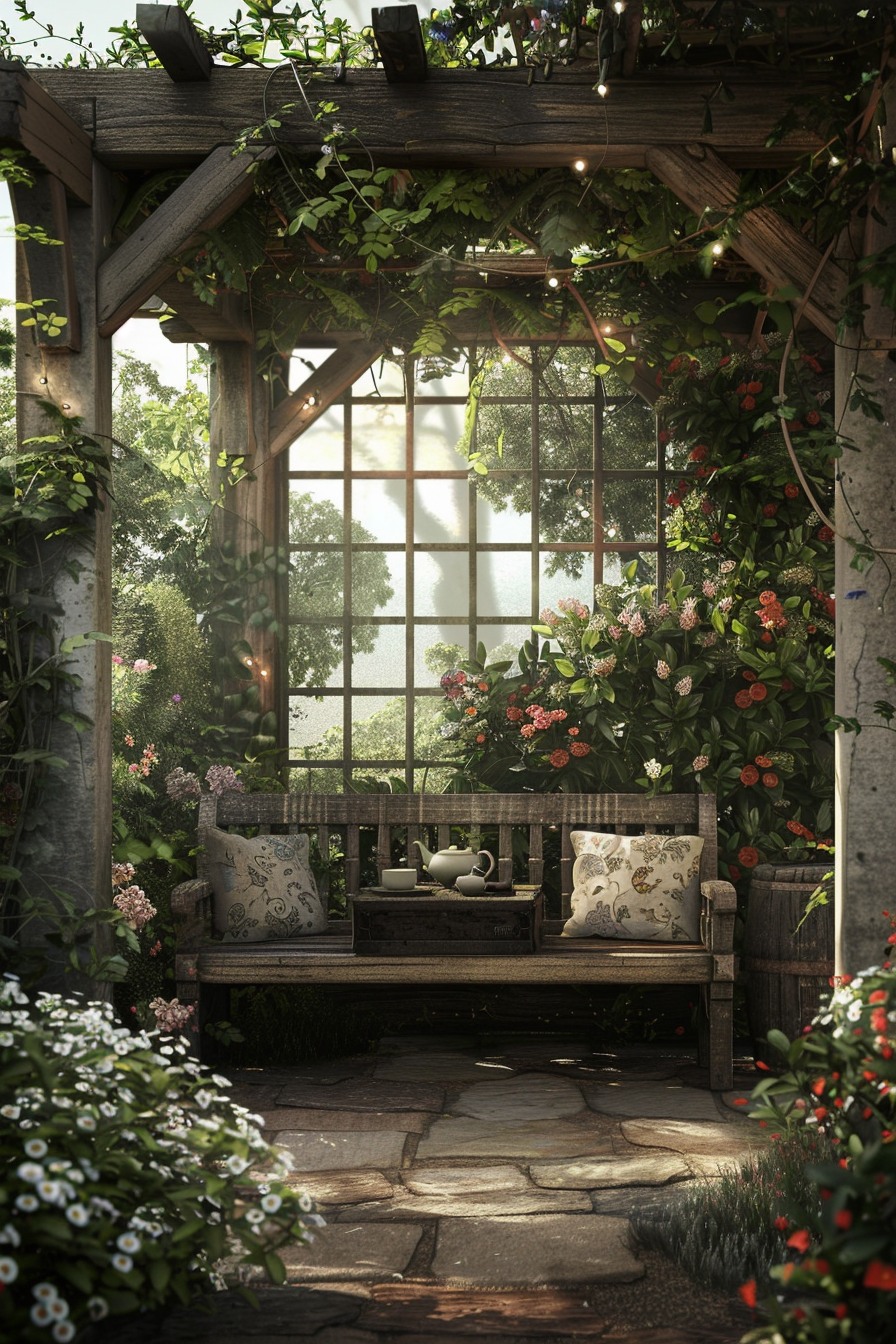
14. Embrace the Wild Look
Cottage gardens should look a bit untamed and natural. Allow some plants to self-seed and grow freely, giving your garden a charmingly wild and spontaneous feel.
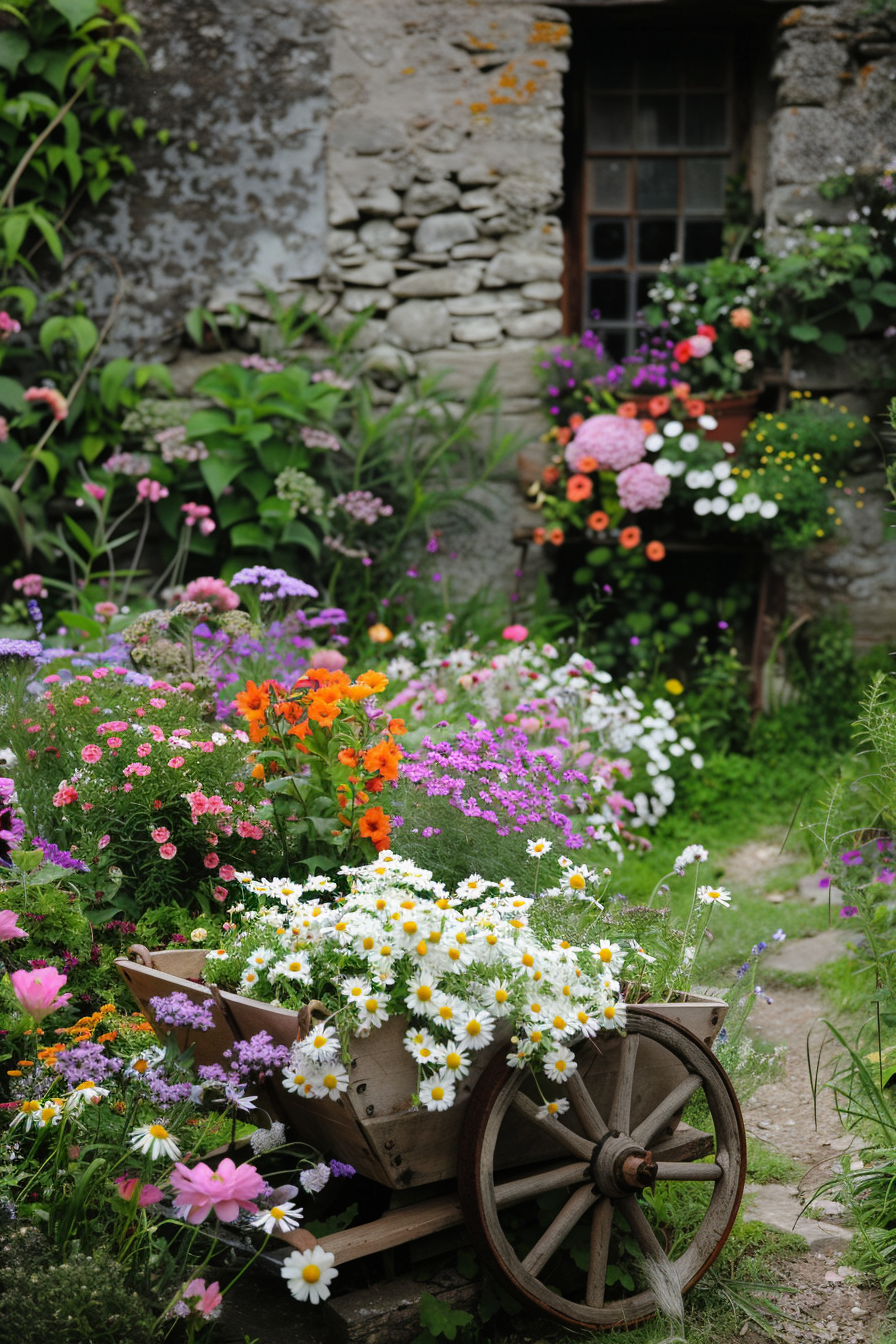
15. Integrate Native Plants
Incorporate native plants like echinacea, black-eyed Susan, and bee balm. These plants thrive in local conditions and support local wildlife, making your garden both beautiful and eco-friendly.
